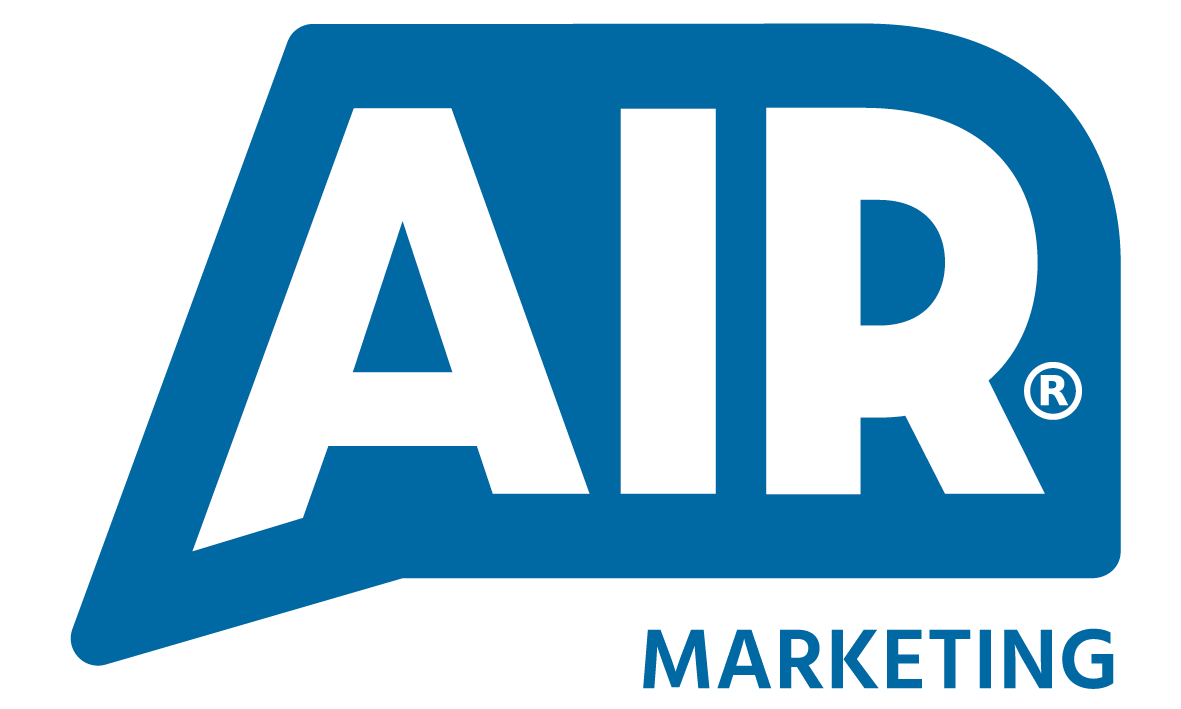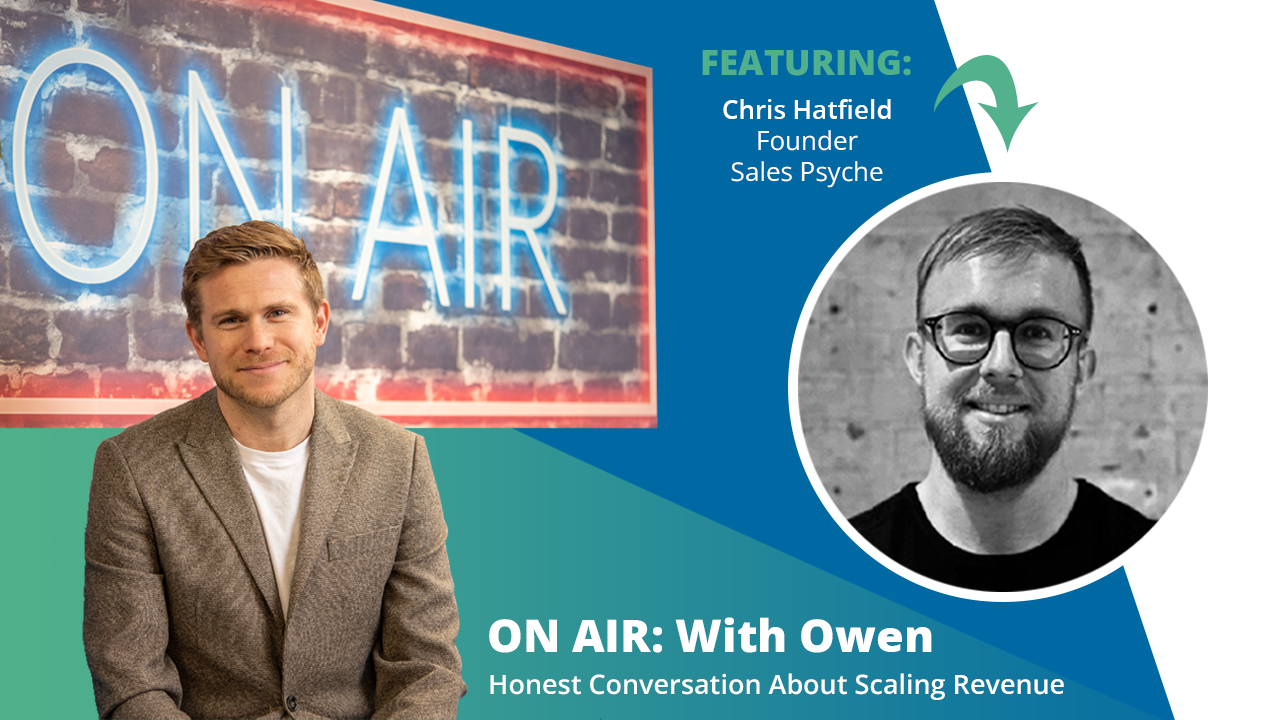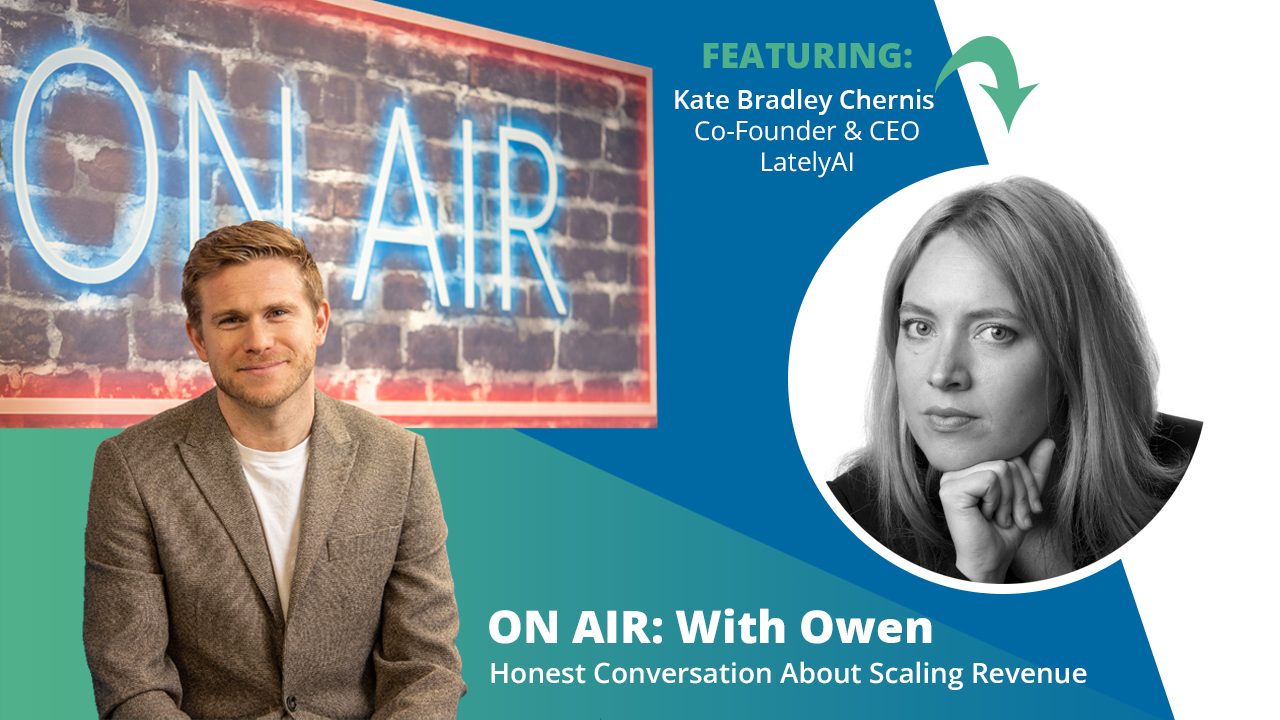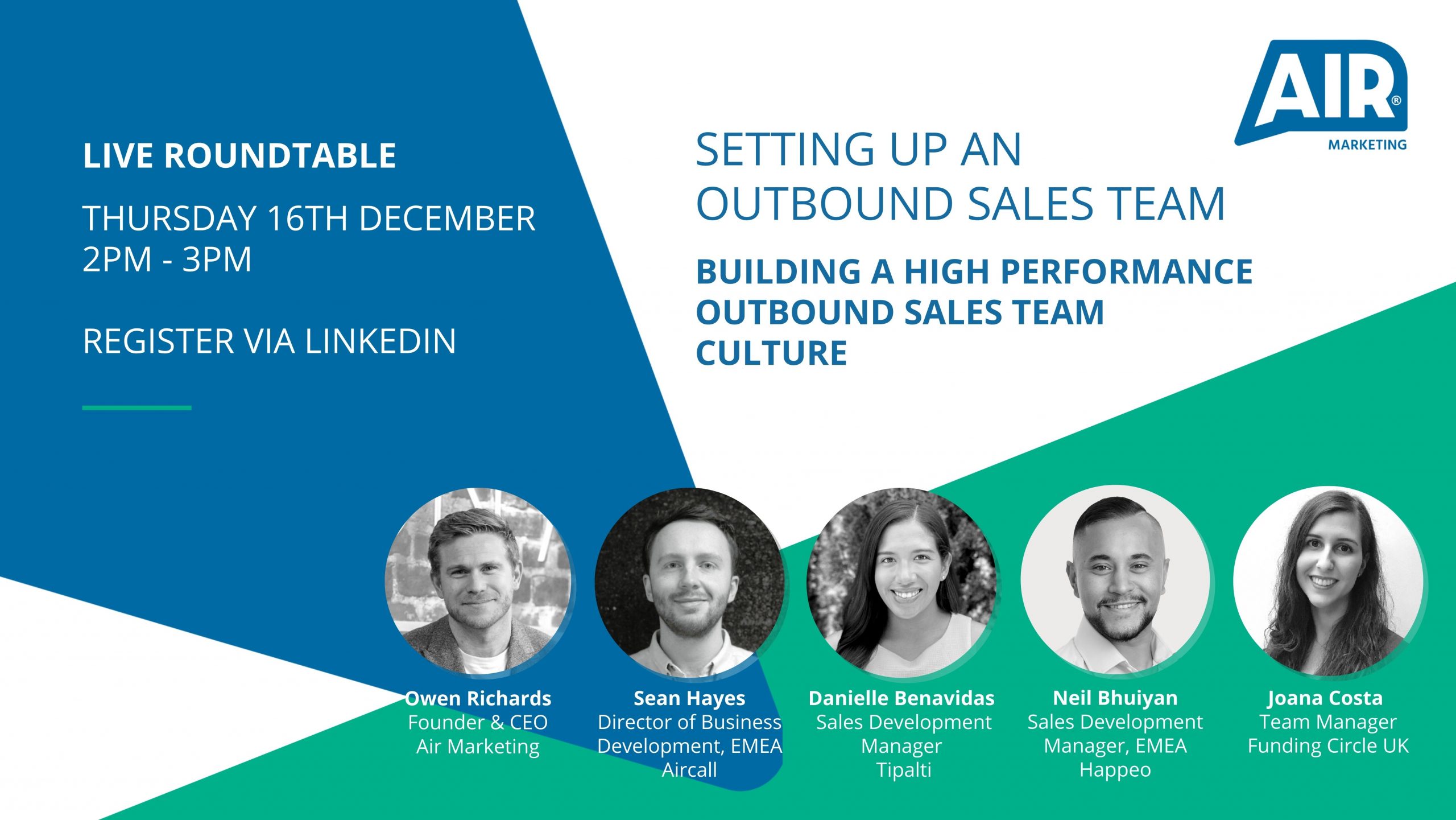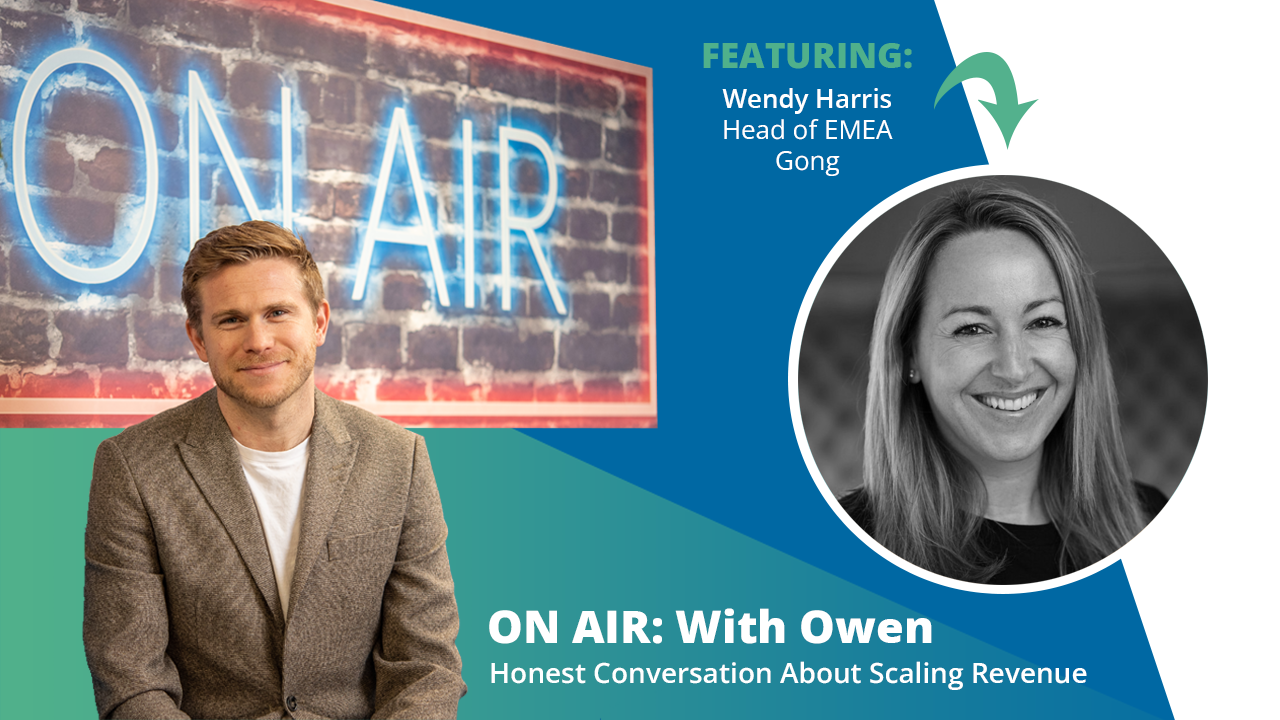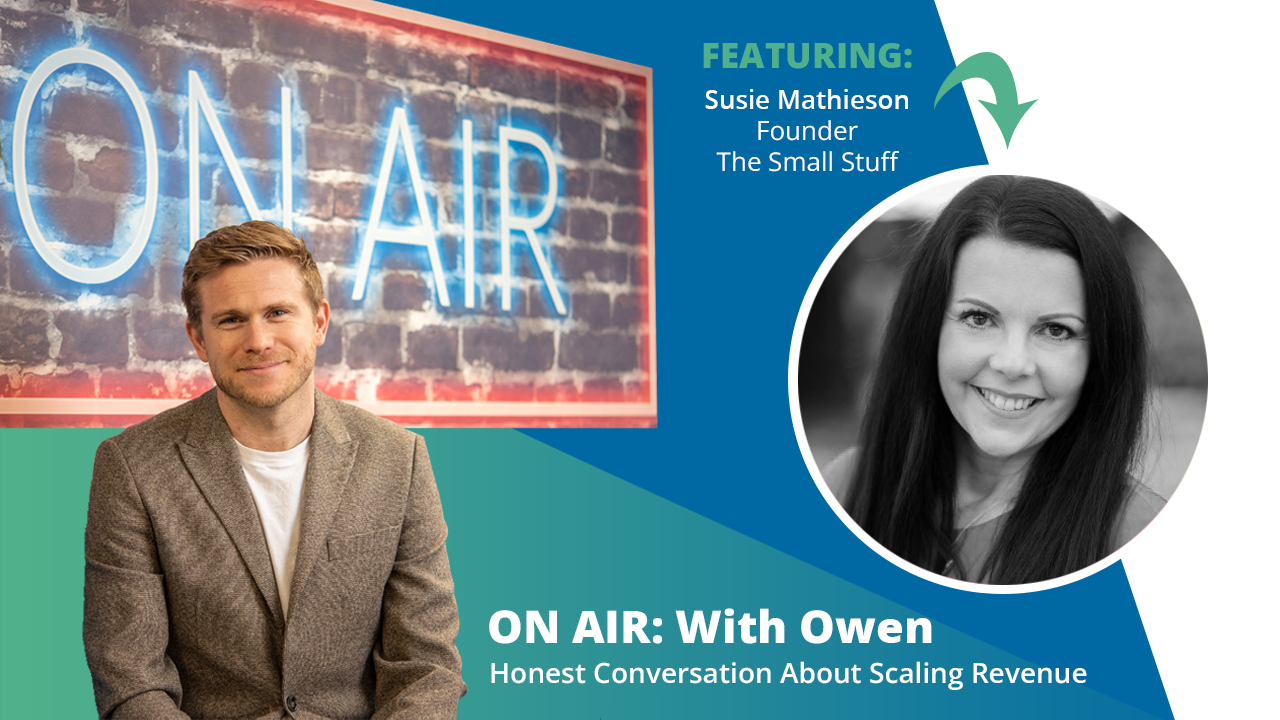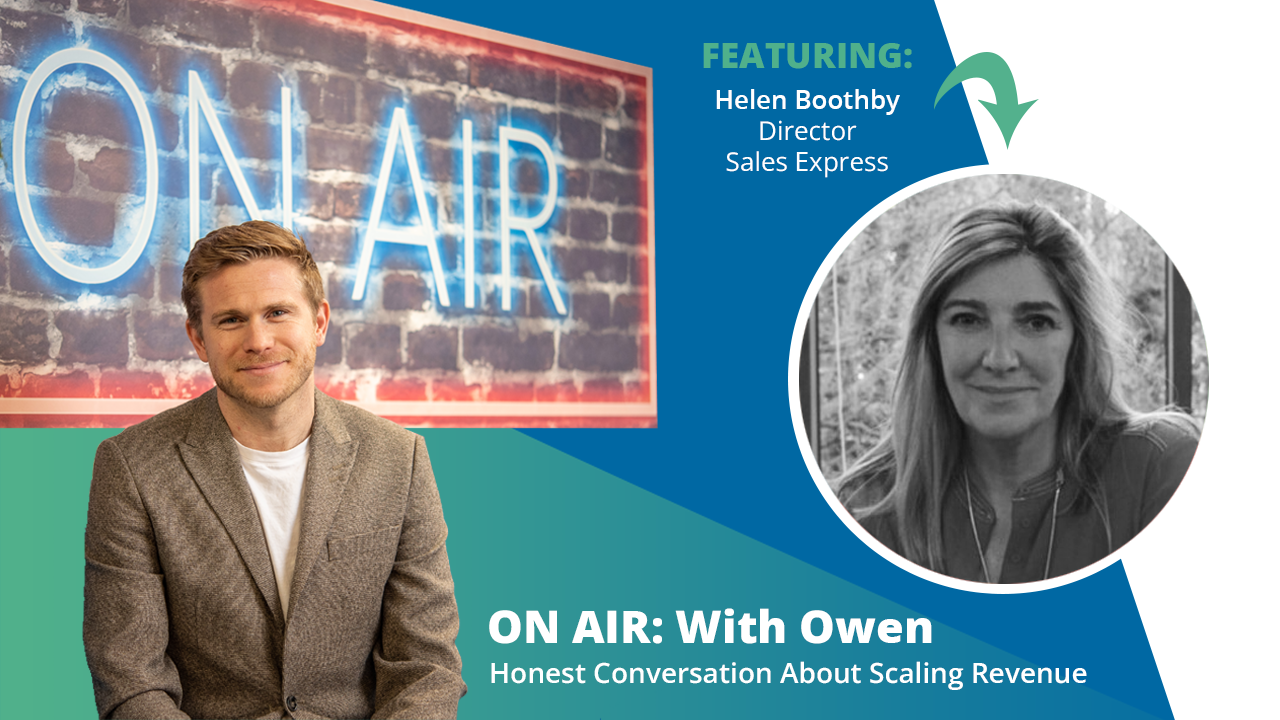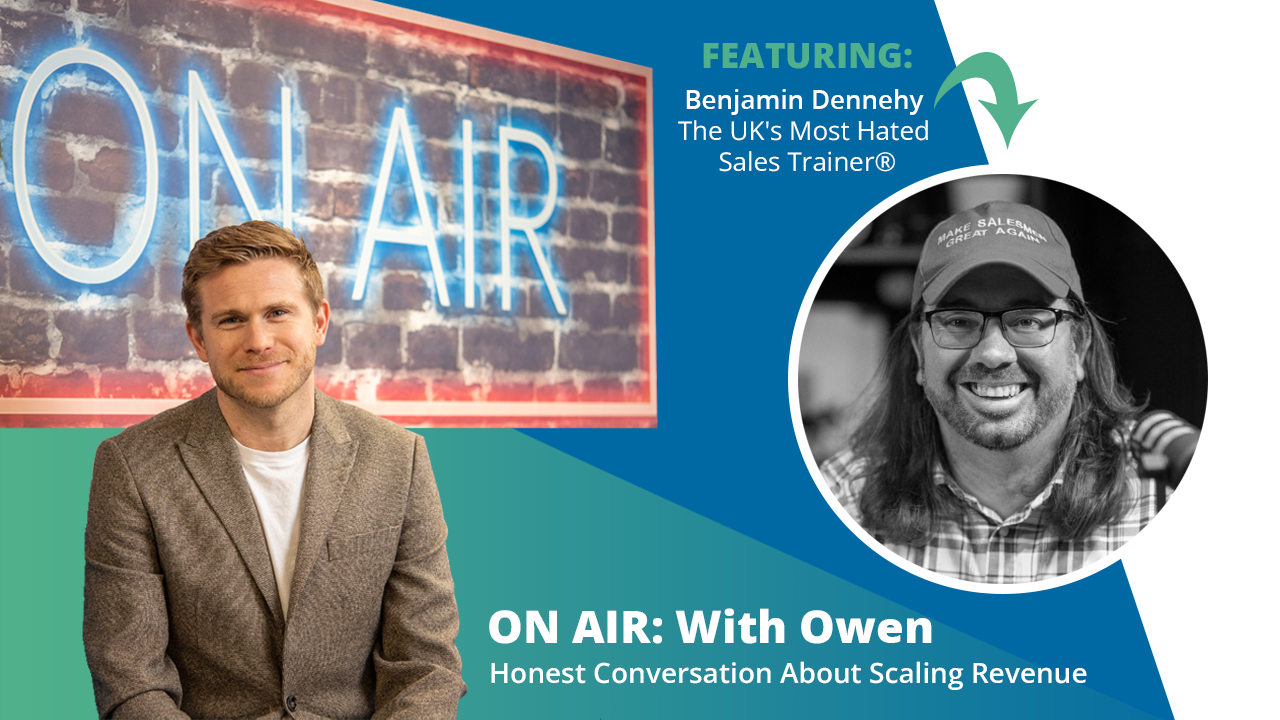Managing and building a great team culture is essential for all parts of a business, but especially so for outbound sales.
Outbound sales is notorious for hiring quickly and low retention rates, both of which can have a negative impact on how team members work together.
A sales team with a poor team culture can quickly become toxic, resulting in low morale, low motivation and teammates that don’t trust each other.
In this blog, we will look at the top ways you can manage the team culture in your outbound sales department – all tried and tested by Team Air.
Why It’s Important to Get the Balance Right
When it comes to managing team culture, there is a fine line between getting results and looking after your team.
If your team is focused on nothing but getting results and putting sales above everything else, you run the risk of frustrating and alienating staff. Not only this, but if your team members feel they must make sales to keep their jobs, they will end up frustrating and alienating prospective customers too.
While looking after your team is essential, it’s important to ensure things don’t get too comfortable. If your sales staff don’t feel inclined to perform, then you end up not hitting targets. A bit of friendly competition amongst colleagues is perfectly fine.
It’s essential to get the balance right. Think about your team’s current culture and what side of the line you stand on.
Remote Working and the Effect on Team Culture
Managing team culture has faced significant challenges over the past year with the introduction of remote working.
It is easier to talk to other team members in an office, whether it is a quick chat as you walk past their desk or wait to get a coffee. However, when you work apart from one another, engaging with others gets a little more challenging.
The good news is outbound sales teams have adapted to this new way of working and have found new methods of managing team culture. Let’s look at some of them.
Eight Things You Can Do Today to Manage Your Team Culture
At Air Marketing, we have always placed a strong emphasis on creating a positive team culture. It’s not always been easy, especially as our business has grown, but we’re proud of how far our team has come over the years.
We spoke to our team leaders to find out their top eight tips for managing their team’s culture and keeping everyone motivated.
- Recognise People’s Achievements
By recognising your team’s achievements, you’re not only keeping staff engaged and making them feel valued but encouraging them to go the extra mile. The great thing about this technique is that you can do it in the office as well as remotely.
We like taking ten minutes on a Friday to celebrate the week’s achievements, looking at different campaigns and showing the value that individual team members have brought.
- Introduce a Little Friendly Competition
As we mentioned earlier on, a little competition, either in teams or between teams, can be a good thing. This motivates the best performers and energises those who may be behind in the rankings.
Our team leaders do this three times a week, sharing their screen and showing their team how they are performing compared to all the other outbound sales teams.
- Make Your Team Feel Like Part of The Business
When team members don’t know the role they play in your organisation, they can quickly become uninterested in what they do. By making your team commercially aware, they can feel like a part of something bigger.
Take the time to talk about what is happening in the wider business, both positive and negative.
- Treat Your Team as Individuals
As an outbound sales team, your team members all share the same goal – winning as much new business as possible. However, individuals in your sales team will be motivated in vastly different ways.
For example, while some team members might be motivated by career advancement, some are motivated by providing for their loved ones.
When you manage a team, manage each person in a way that brings out the best in them. Speak to all the members of your sales team and see what gets them out of bed every morning.
That way when you provide feedback, you can be sure the message sinks in.
- Be Approachable
Being a manager or team leader is hard. You’re not only responsible for your team’s well-being, but if targets aren’t met, you’re the one that’s ultimately responsible. One thing you can do to make things better for both you and your team is to be as helpful as possible.
Being approachable in your management style can help foster a strong team culture. Encourage staff to come to you with their concerns and questions, as well as any training needs they have.
- Check in Regularly
Providing regular feedback and letting your team have their say can help you be proactive and resolve minor issues before they become major problems.
A short daily meeting is often the best way to do this. Go around your team and see what their plans are for the day ahead. That way, if anyone needs a little extra help or isn’t sure of something, the whole team can offer their support.
You can also talk through the targets and leads, letting the team collectively know if they are on track for the week or month.
- Have a Positive Attitude and Drive Performance
It can be hard to be confident when staff are off ill, prospects aren’t picking up the phone, and you’re not going to hit your weekly KPIs.
However, did you know positivity is catching? There is a phenomenon called ’emotional contagion’ where people close to you subconsciously mimic your emotions.
This means by staying positive; your team are more likely to think positively too.
- Have Fun!
Finally, it’s essential to unwind and bond with the rest of your team. This helps improve communication and collaboration and can be a fantastic way to destress at the end of the working day.
The other advantage is that friendly colleagues are more likely to spur each other on to hit their targets.
Whether you go out for a meal after work or take part in a Zoom pub quiz, take some time to get to know each other.
Want to Find Out More About Setting up an Outbound Sales Team?
If you need help with building an outbound sales team, read more about our service here or call our Sales Director, Marco Alfano-Rogers, on 0808 599 0354 to discuss your requirements.
If you’d like some further tips on how to manage your outbound sales team, our content series will provide you with all the information you need.
Visit our knowledge hub for blogs, webinars and podcasts that will help you create a positive outbound sales team culture that will drive results.
